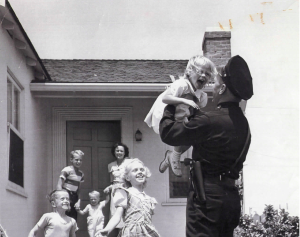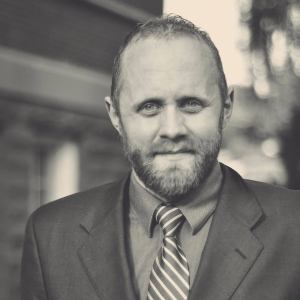Dear Utah:
Darrien Hunt matters.
Utah County Attorney Jeff Buhman has declared that the lethal force used against 22-year-old African-American Darrien Hunt was justified. The police officers who shot Hunt seven times in the back will not be disciplined.
Utahans don’t like talking about race much. It’s controversial, incendiary, awkward, incriminating, and all kinds of other nasty things. Is it because Mormons are just backward? Academic sorts are resistant to such explanations in describing most communities, so there’s no reason to loosen our discipline when talking about Mormons. Even more, they’re among the best-educated church-goers in the country. No, as William Faulkner said, the past is never dead. In fact, it’s not even past.
Based on the evidence available to us (which, suspiciously enough, does not include footage recorded from the police car—footage available for the overwhelming majority of police stops), the public will never have access to the seconds leading up to the shooting of Darrien Hunt. Is it just an accident of history or a cover-up? Without some crack investigative journalism, we will need to reckon with Darrien Hunt’s death without access to all the information. These circumstances require that we leave our interpretative framework open to interpretations, both simple and complex. Maybe the police officers just panicked. Maybe the threat was legitimate. Maybe the police drew their weapons to show intent. Maybe they did not. We may never know.
Hunt is hardly the first to face police action due to threatening people with a sword. Fifty-five year-old Grady Wells, a white Mississippian, ran toward some officers with a sword, returned to his car, drove for a few blocks until forced off the road by the police after hitting other cars, a police motorcycle and barely missing some pedestrians. When asked to exit the vehicle, he tried to attack officers again, prompting the police to open fire. Salt Lake City woman Natasha Davis is facing attempted murder charges for attacking her boyfriend with a sword; meanwhile, a Louisville eighteen-year-old cut a sixteen-year-old with a sword and received a second degree assault charge. And, of course, there are instances such as Darrien’s where the attacker is shot outright. Responses to sword attacks run the gamut, so we can’t automatically assume that the police response was either appropriate, proportionate, or necessary. We may never know.
Photo by AP
Given our ignorance of all the circumstances, it’s premature to simplify it into a racial narrative; but it’s also impossible to entirely distance ourselves from it. how can we be so allergic to allowing that race might have played a factor? The Mormonism of our pioneer stock is also the Mormonism that defied men in uniform, that faced down a U.S. army, and that had full confidence in its ability to find success free of Gentile ways. We knew how to square down men whose actions even hinted of corruption and wickedness.
In matters of race, however, the Mormons’ fortress proved to be more porous than they would have liked to admit. Racism is insidious like that. Mormonism’s foundational text insisted that “all are alike unto God, both black and white, bond and free.” A revelation to Joseph Smith declared that “it is not right that one man should be in bondage to another.” But as the Saints carried such radical notions of equality with them, they faced a hailstorm of racial epithets to remind white Mormons how American society expected them to act. No, you can’t talk about racial equality. No, you can’t oppose slavery. When they did, they were labeled quite literally as “Black Mormons” not to be trusted in respectable white society. Comparing the Saints to African-Americans became de rigueur for Jackson County papers in 1833 Missouri. The Saints could never boast the anti-slavery laurels of a William Lloyd Garrison or an Angelina Grimke (though Mormonism did, on one occasion, attract a radical; in 1842, the Cincinnati branch attracted Rees E. Price, a radical’s radical so committed to abolishing slavery that he found Garrison to be a little too moderate for his tastes).[1]
Over the next three generations, Mormons learned their lesson. Between 1845 and 1852, Mormon leadership articulated with increasing ardor that African-Americans should not hold the priesthood. That same year, Mormons publicly embraced the practice of polygamy, an announcement that invited a slue of Eastern attacks that accused Mormons of being too Chinese, too Turkish, too African, or too [insert favorite colonial title here]. Respectable white people could not endure such things, so Mormons learned to adopt the language of white establishment America. Being white was not merely a skin color; it was a set of attitudes, lifestyles, and values. Above all, it was a defense mechanism. Associating with black folks came with a price, and it was a price that white Mormondom refused to pay. Whiteness came to be valued so highly that one missionary boasted of the territory’s whiteness, that it was the last great white refuge from the storm of interracial marriage that he saw flooding the South.
So why are Utah Mormons so quick to defer to the legal authorities in these things? Could it be that Darrien Hunt reminds us of a ghost we have sought so hard to exorcise? That, when in doubt, we bow to the man in the uniform? It is not that the legal establishment hated Darrien Hunt and wanted him dead. No, that too is monocausal—and frankly, unkind to the many decent and humane people living in Darrien Hunt’s neighborhood. Did Hunt pose a threat to people around him? Almost certainly. Did it merit action? Definitely. An action including an immediate death penalty? It’s at least worthy of further interrogation, and calls for it are no more Communist than the Libertas Institute’s call for greater transparency in how often Utah police use force.
Asking these questions need raise no alarms as to our loyalty. My grandfather, Stanley Stevenson, a police officer in Los Angeles during the 1960s, dealt with racial unrest on a daily basis. A committed supporter of Barry Goldwater and a dark horse Republican candidate for Congress, he had little patience for the rhetoric of left-wing causes. But Stanley knew excessive force and police brutality when he saw it. There was no talk of deferring to the men in the uniform; there were hard questions coupled with a healthy dose of anger. No one believed more in the need for the public to hold law enforcement to a higher standard, to ask questions of them that would never be asked of ourselves, to expect judgment worthy of a man or woman who holds the power of life and death in their hands. He expected deference from no one.
Reticent though we may be ask questions about this incident, letting it slide will only prove—yet again—that we are unwilling to grapple with our weakness of the things of the proverbial Babylon. No part of Mormon doctrine requires that the men of uniform be sanctified in a halo of perfection. No teaching of the Church requires that we raise our hands to the square to sustain our local police. But we do have a doctrine that teaches that “it is the nature and disposition of almost all men, as soon as they get a little authority, as they suppose, they will immediately begin to exercise unrighteous dominion.”
Perhaps it is time that we listen.
~Russell Stevenson, The Mormon History Guy
Russell Stevenson has published two books, Black Mormon: The Story of Elijah Ables (2013) and For the Cause of Righteousness: A Global History of Blacks and Mormonism (forthcoming). He has also published in the Oxford University Press American National Biography series, the Journal of Mormon History, and Dialogue: A Journal of Mormon Thought.
[1] For more on the racialization of white Mormons, see my forthcoming work, For the Cause of Righteousness: A Global History of Blacks and Mormonism (Salt Lake City: Greg Kofford, forthcoming), chpt. 2; and Paul Reeve, Religion of a Different Color: Race and the Mormon Struggle for Whiteness (New York: Oxford University Press, forthcoming).




It’s interesting to me that a posting by a purported historian has an opening paragraph containing at least three factual errors, all pretty easily researchable with the power of Google.
“Utah County Attorney Jeff Buhman has declared that the lethal force used against 20-year-old African-American Darrien Hunt [Hunt was actually 22, and at least half-white] was justified. The police officers who shot Hunt seven times [six times, actually] in the back [actually once in the back, the other shots in the arms and hip – not a big difference, perhaps, so why not get the actual facts right?] will not be disciplined.”
Combined with various other spelling, punctuation, and grammatical errors, it’s tough to take this writer seriously.
Perhaps my favorite error in this one – “as soon as they get a little authority, as they suppose, they will immediately begin to exercise unrighteous opinion.” If the shoe fits. . .
Hi Joyce:
I appreciate your efforts to keep this factually based. On some points, I agree with you and have made the appropriate revisions. However, perhaps in your efforts to critique, it appears you indulge in undue zeal. Writers need to be kept honest, so it’s a good thing, overall.
That said, for example:
1) African-American is a term that can be applied to any American who has African ancestry. If one is half-white, one is still African-American; in fact, Elijah Able[s] himself was probably less than that, but even contemporaries considered him to be African enough to be designated as a “negro.”
2) The coroner has determined that all the shots entered his posterior. So call it the arms, call the legs, call it the head; the salient point is that he was running away from the cops–and for a considerable distance, not towards them. Recently released footage demonstrates this: http://fox13now.com/2014/11/06/new-footage-from-fatal-shooting-of-darrien-hunt-released-family-attorney-responds/